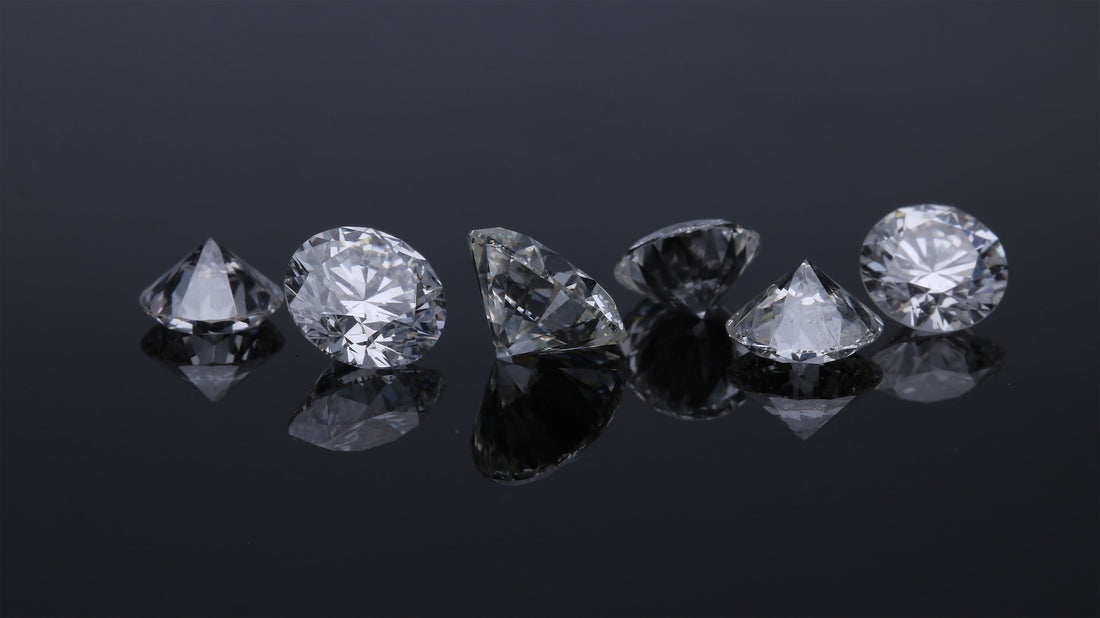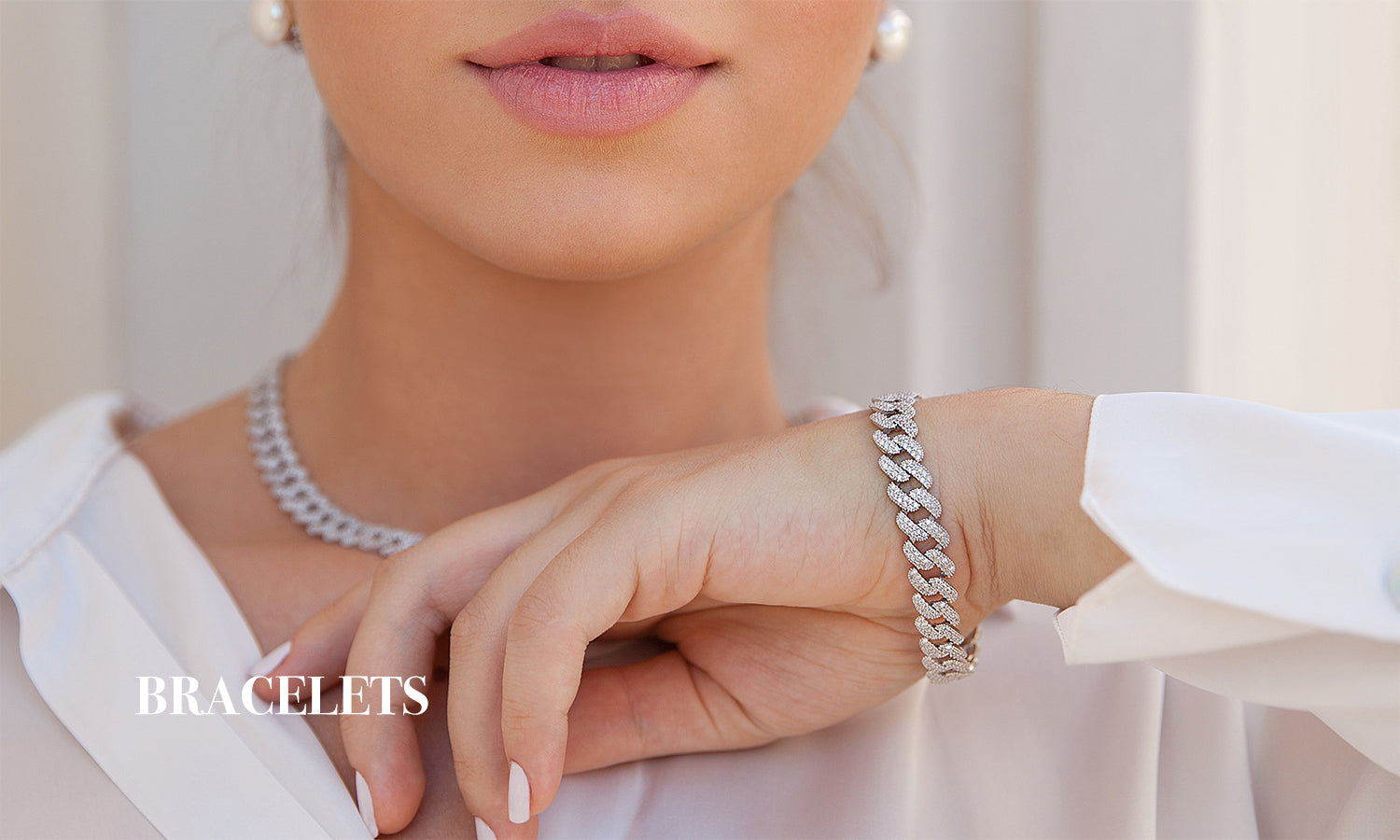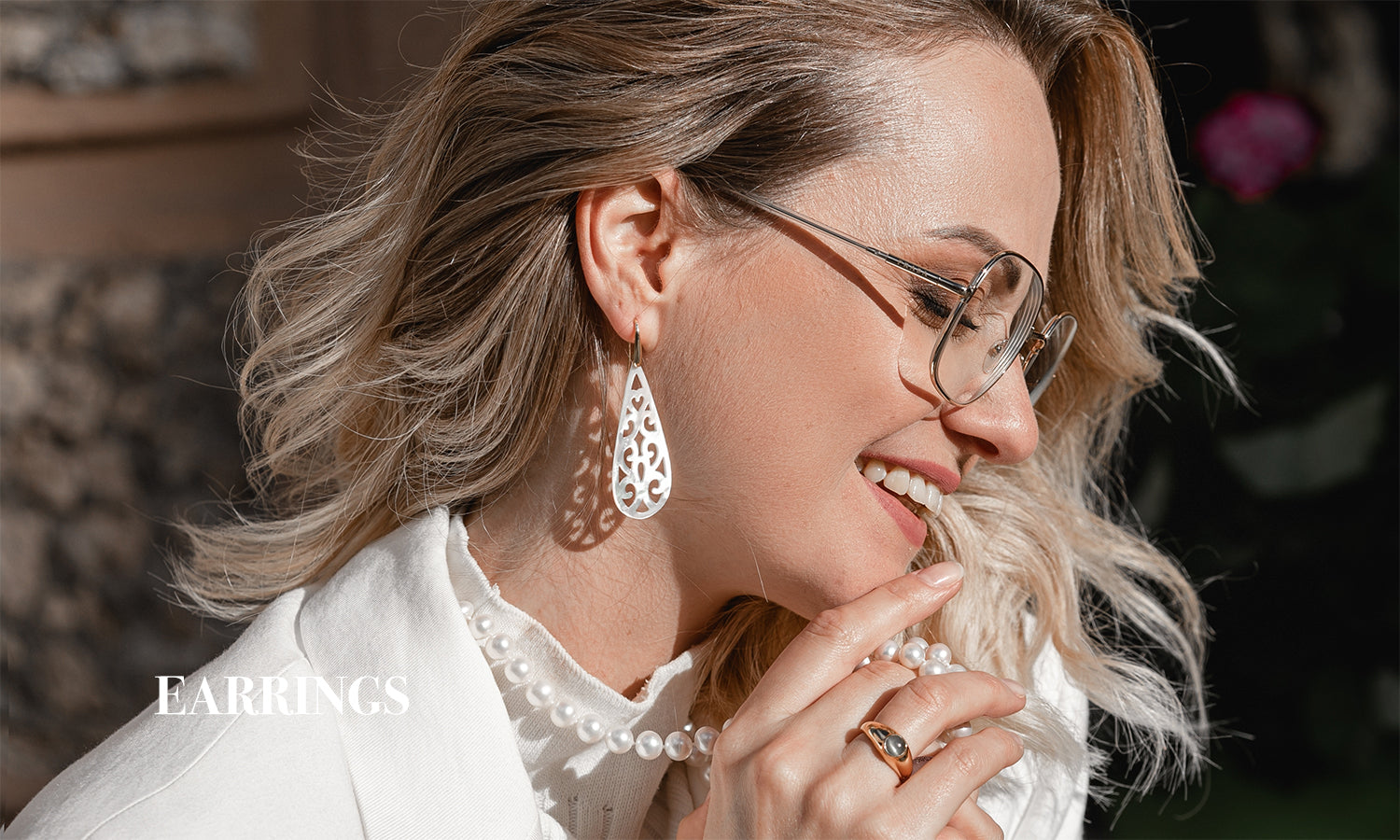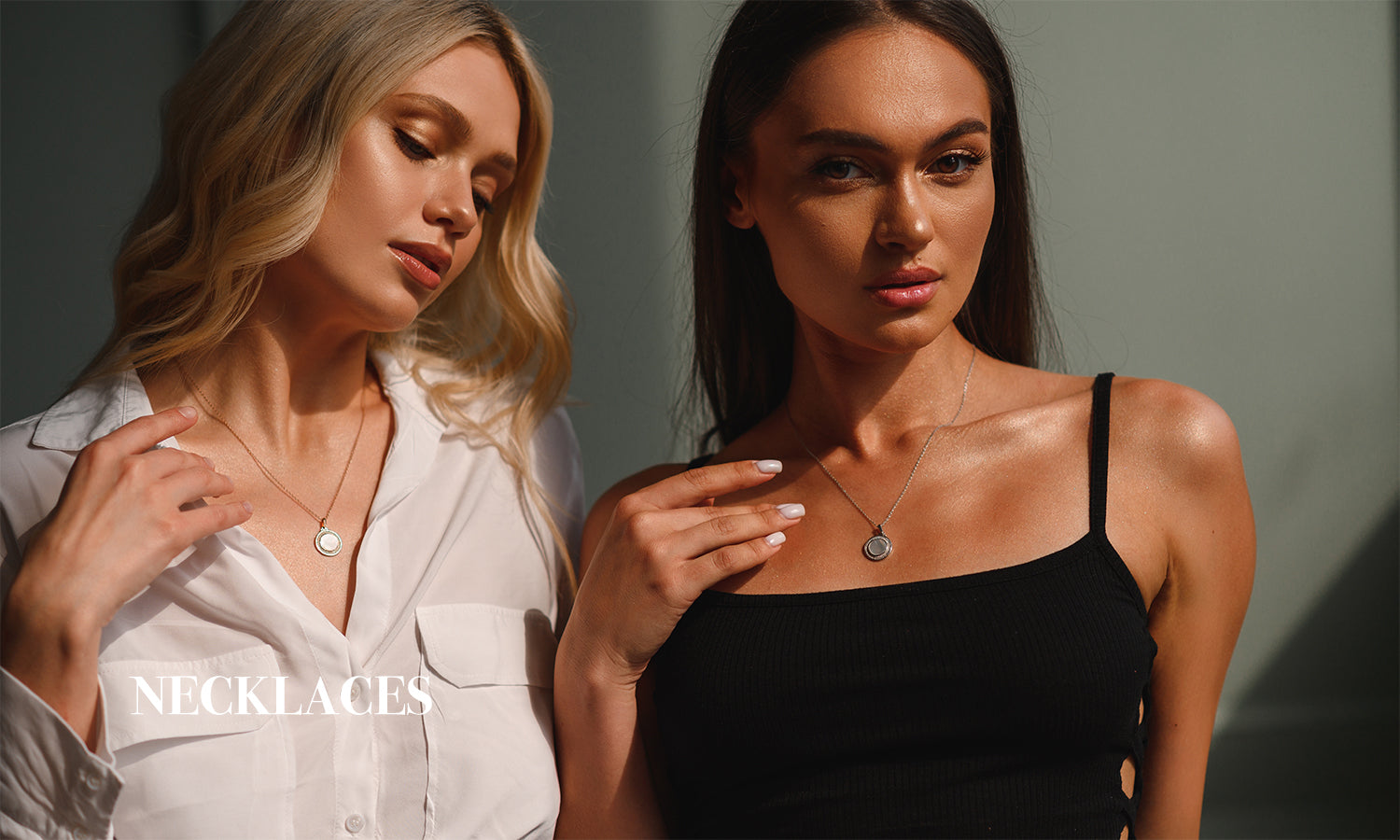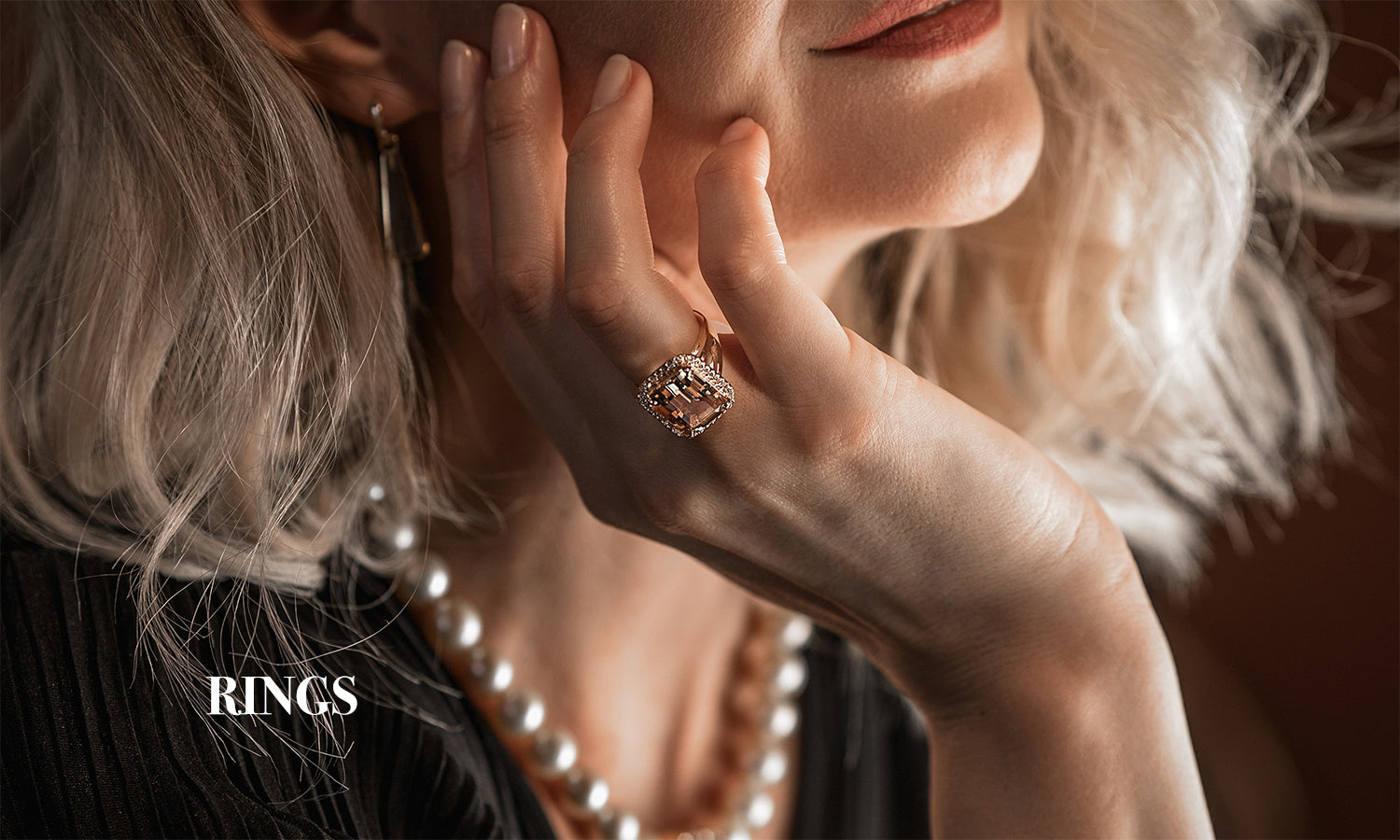When it comes to choosing a diamond, there are a lot of factors to consider. Do you choose a diamond, a moissanite, or a cubic zirconia? Each of these stones has its own characteristics and advantages, so deciding which one is best for you can be difficult.
If you're looking for a diamond replacement, you've probably heard of moissanite and cubic zirconia. Both are popular diamond simulants and they come with their own advantages and disadvantages. So, which one is the best diamond replacement? In this blog post, we'll take a closer look at moissanite and cubic zirconia and compare them to help you decide which one is the best for you.
Introduction to Diamond Alternatives
When it comes to choosing a diamond substitute, two of the most popular options are moissanite and cubic zirconia. Moissanite is quickly becoming a popular choice for those looking for the best diamond replacement, due to its high durability, near-diamond brilliance and affordability. Meanwhile, cubic zirconia has been around for much longer and is also an affordable alternative. However, not all cubic zirconias are created equal; they require good quality craftsmanship in order to replicate the look of diamonds. Ultimately, both moissanite and cubic zirconia can be great choices when looking for a diamond alternative, depending on what is most important to the wearer.
Both offer an excellent alternative to diamonds with their own unique benefits and drawbacks Thereafter, it is clear that both moissanite and cubic zirconia offer an excellent replacement for diamonds, with each having its own unique benefits and drawbacks. Ultimately it is up to the individual to determine which is the best diamond replacement for their needs.
Analyzing the Properties of Moissanite
Moissanite is an incredibly hard stone, rated 9.25 on the Mohs scale, making it the second hardest gemstone after diamond. This makes it resistant to scratches and abrasions, so it won't wear down over time like some other gemstones. As a result, it is considered one of the best diamond replacements available. While cubic zirconia may be cheaper and more readily available, moissanite offers superior durability and longevity. Its unique refractive index creates a rainbow-like sparkle that makes it even more desirable than a diamond in some cases. Overall, moissanite is the better option for those looking for a lasting, brilliant alternative to diamonds.

0.5CT Moissanite Heart Shape Soleste Halo Studs for Women
Unlike diamonds, moissanite is a lab-created gemstone, giving it a uniformity that allows for more consistency in quality and color. It also has a higher refractive index than diamonds which gives it more fire and brilliance than a diamond of the same size! In conclusion, it can be said that moissanite is the best alternative to a diamond. It offers uniformity in quality and color as it is lab-created and has more fire and brilliance than a diamond of the same size thanks to its higher refractive index. Ultimately, when considering best diamond alternatives, moissanite is the best choice.
Examining the Characteristics of Cubic Zirconia
Cubic Zirconia, or CZ, is a lab-created stone made of zirconium oxide and has similar optical characteristics to that of a Diamond. Moissanite and cubic zirconia are both popular alternatives to Diamonds that provide a burst of brilliance when set in jewelry. Moissanite offers more fire than CZ while CZ is more affordable and durable. Deciding which is the best alternative to Diamonds is largely a matter of personal preference and budget as each offers unique advantages. Moissanite is considered a higher-end stone than cubic zirconia, but both offer a vibrant sparkle and look very similar in appearance to Diamonds. Ultimately, it comes down to what you’re looking for in an alternative gemstone and how much you want to spend.

CZ is known for its low cost and is available in a variety of shapes, sizes and colors. It can also be cut in various ways to create more unique styles, making it the best diamond replacement. Moissanite is also gaining popularity as an alternative to diamonds and has similar qualities to Czar stones. It may be slightly more expensive than Czar stones, but its hardness is higher, making it a great option for those looking for something that can stand up to wear and tear. Ultimately, both cubic zirconia and moissanite offer great options when looking to find a diamond replacement of similar quality and brilliance.
With its durability and affordability, CZ is seen as an attractive alternative to Diamonds when it comes to making jewelry pieces. All in all, it is evident that Cubic Zirconia (CZ) is the better choice when considering an alternative to diamonds for making jewelry pieces. It offers the advantage of being more affordable with its durability and quality that is comparable to that of diamonds. CZ has a greater brilliance and shine than moissanite, and therefore can be a better option for those who cannot afford genuine diamonds.
Comparing and Contrasting Moissanite and Cubic Zirconia
Moissanite is known for its near-perfect clarity, making it a great alternative to diamonds because its appearance is indistinguishable from a diamond’s sparkle and shine. Cubic zirconia also offers a good amount of clarity, but its brilliance and fire are not as radiant as moissanite. When considering which of the two gems is best for a diamond alternative, moissanite is the clear choice. It has more durability and sparkle than cubic zirconia and its color is also more natural, making it look closer to a genuine diamond. Moreover, moissanite is much less expensive than diamonds, so it offers great value compared to diamonds without sacrificing any beauty or quality. Ultimately, moissanite is the best alternative to diamonds because of its beautiful cut, color and affordability.
While both gems offer high durability and can withstand wear and tear over time, moissanite is the tougher of the two options, due to its higher resistance to scratching and chipping than cubic zirconia Besides its higher resistance to scratching and chipping, moissanite is also considered to be a better alternative to Diamonds due to its high durability and ability to withstand wear and tear over time. While cubic zirconia has its own set of advantages, moissanite still remains the best choice due to its superior qualities. Overall, moissanite is the best alternative to Diamonds.
In conclusion, moissanite and cubic zirconia both have their pros and cons. Ultimately, the choice of which is the best replacement for a diamond for you depends on your own personal preference. Moissanite has more fire and sparkle than cubic zirconia, but it's also more expensive. On the other hand, cubic zirconia is cheaper but it lacks the fire and sparkle that moissanite has. Some people prefer the unique look of moissanite while others prefer the affordability of cubic zirconia. The choice is yours!
Moissanite vs Diamond: What's the Difference and Which is Right for You?
Are you looking for the perfect engagement ring but don't know where to start? You've probably heard of both diamonds and moissanite, but what's the difference between the two and which one is right for you?
Exploring the Similarities of Moissanite and Diamonds
Both Moissanite and Diamonds are highly refractive gemstones, meaning that the cut of their surfaces create beautiful faceting and sparkle. This is one of the similarities between the two gemstones; both are composed of carbon and are highly durable, making them ideal for daily wear. Moissanite is slightly less expensive than diamond and has a greater refractive index, thus creating even more beautiful sparkles and flashes of color when exposed to light. Another difference between moissanite and Diamond lies in their composition; while Diamond is composed of pure carbon, moissanite discovers its origin from silicon carbide which gives it unique properties such as thermal conductivity and a higher resistance to heat. Despite their differences, both moissanite and Diamond share similarities in terms of optical properties such as refractive index, dispersion and luster, making them popular choices among jewelry makers and consumers alike.
Both moissanite and Diamonds are extremely hard gemstones on the Mohs scale, making them both incredibly durable and scratch-resistant Next, it is important to note the comparison between moissanite and Diamond. While both are extremely hard gemstones on the Mohs Scale, making them both incredibly durable and scratch-resistant, there are slight distinctions that can be made between them. Moissanite is slightly lower on the Mohs scale than Diamond, meaning that while it is still incredibly durable and resilient, Diamond could last a bit longer. Additionally, their differences in refraction and brilliance can be seen with the naked eye.
Understanding the Differences Between Moissanite and Diamonds
Moissanite is a lab-created gemstone which resembles a diamond in terms of its sparkle and hardness, yet it is much more affordable. The two gemstones look quite similar, with moissanite having hints of soft grey or yellowish undertones while Diamonds are usually colorless. Moissanite is also slightly less hard than a diamond as it has a Mohs hardness rating of 9.25, compared to Diamond's 10. Both stones reflect light brilliantly and capture attention, however moissanite has a slightly higher refractive index at 2.65 compared to Diamond's 2.42. Overall, the two gemstones are very similar in terms of sparkle and beauty, yet their differences in terms of price and quality makes them highly distinguishable.
However, unlike diamonds which are judged on the 4Cs (clarity, color, cut and carat weight), Moissanite is primarily judged on its optical properties such as brilliance, fire and luster Finally, it is clear that diamond and Moissanite have some similarities such as their hardness, yet they are judged and measured differently. While diamond is judged on the 4Cs (clarity, color, cut and carat weight), moissanite is mainly judged on its optical properties such as brilliance, fire and luster.
When it comes to choosing between a diamond or moissanite for your engagement ring, it really comes down to personal preference. Both diamonds and moissanite are beautiful, timeless stones that can be used to create a stunning ring, but only one can be right for you. Weigh the pros and cons of each stone, consider your budget and which stone speaks to your heart and you'll be sure to find the perfect engagement ring.
What's the real difference between Moissanite and Cubic Zirconia?
Whether you're looking for an affordable engagement ring or a special piece of jewelry, you may have come across moissanite and cubic zirconia. But what is the difference between them, and which one should you choose?
When it comes to exploring the differences between moissanite and cubic zirconia, one of the main distinctions to note is their prices. Moissanite tends to be more expensive, as it is a lab-created stone and cubic zirconia is an imitation diamond. However, both stones can look quite similar in terms of their brilliance and sparkle--but if you look closely, moissanite is slightly more brilliant and has more fire than cubic zirconia. Moreover, cubic zirconia tends to be much heavier than moissanite, so if you're looking for a piece of jewelry that won't weigh you down, moissanite is the way to go! Thus, although these two stones are quite similar in appearance, their differences in price, brilliance, and weight make them stand out from one another.
Additionally, there are differences in how these two stones look and their optical properties: moissanite has more fire and brilliance than cubic zirconia due to its higher refractive index, giving it more sparkle Moreover, there is no denying that moissanite and cubic zirconia have their differences. They have different chemical compositions, sources and prices. However, when it comes to appearance, moissanite clearly wins the battle with its superior fire and brilliance due to its higher refractive index. All in all, this makes moissanite an ideal choice for those looking for a dazzling stone!
Examining the Similarities Between Moissanite and Cubic Zirconia
Both moissanite and cubic zirconia are commonly used in jewelry as they possess the same physical characteristics and visual appeal of diamonds. Yet, the two stones have distinctly different compositions, with moissanite being made from silicon carbide and cubic zirconia crafted from zirconium oxide. Additionally, moissanite is one of the hardest substances on earth-coming in at 9.25 on the Mohs scale—while cubic zirconia ranks a bit lower at 8-8.5 on the same scale. But, despite their differences in composition, both of these stones offer stunning visual appeal that imitates that of diamonds-making them ideal for jewellery pieces and accessories.
Both stones are very hard and durable, making them resistant to scratches and discoloration. However, there are also clear differences between moissanite and cubic zirconia. Moissanite is more expensive, but it also provides higher clarity and brilliance. On the other hand, cubic zirconia is much more affordable but offers lower quality in terms of clarity and sparkle. Ultimately, it just comes down to personal preference and budget which stone you choose!
While both stones have a similar level of brilliance, cubic zirconia has more fire (dispersion of light) than moissanite does Furthermore, while it is easy to mistake one for the other, moissanite and cubic zirconia have some distinct differences. Most notably, cubic zirconia has more fire (dispersion of light) than moissanite does and also tends to be a bit heavier. However, both stones boast a similar level of brilliance and can really bring out the sparkle in any piece of jewelry.
Diamonds vs. Cubic Zirconia
When it comes to engagement rings, diamonds are often seen as the only option. But are diamonds really the best choice? We'll look at the pros and cons of diamonds compared to cubic zirconia to help you decide which is the right choice for you and your special someone.

Image source: https://unsplash.com/photos/G1Cd9u3aqnc
Diamonds are incredibly expensive, making them out of reach for many people; however, they are also the hardest material on earth and will last a lifetime if cared for properly. As a diamond alternative, cubic zirconia (CZ) is frequently used. CZ has many of the diamond look-alike properties, such as cut, clarity and colour, but is far less expensive. But unlike diamond, CZ is softer in composition and can easily be scratched or damaged. As with diamond, CZ should be properly cared for in order to maximize its longevity. Both diamond and CZ are stunning jewels capable of adding sparkle to any occasion. The main difference is that diamond will last a lifetime with proper care whereas CZ will not!
Cubic zirconia has become a popular alternative to diamonds due to its affordability and similarity in appearance; however, it is not as hard and can be scratched more easily. On one hand, diamond is the world's hardest natural material, significantly more durable than cubic zirconia, making diamond the optimal choice for items that will see daily wear and tear. On the other hand, diamond is extremely expensive compared to cubic zirconia and for those on a budget or looking for an inexpensive stone for an engagement ring, cubic zirconia is a much more affordable option. In fact, without a trained eye, it’s very difficult to tell the difference between diamond and cubic zirconia. So, while diamond may be more scratch-resistant than its substitute counterpart, both are beautiful when crafted into jewelry—it just depends what kind of diamond you want!
While both diamonds and cubic zirconia have their pros and cons, the best choice ultimately depends on the individual’s budget and preference for how long-lasting the item should be Again, diamond and cubic zirconia have distinct differences and similarities. It is up to the individual to decide which gemstone best fits their budget and level of desired longevity. With diamond being an investment for the long-term, and cubic zirconia providing a cost-effective alternative that has a shorter lifespan, diamond truly remains the king of gemstones.
Pros and Cons of Cubic Zirconia
One of the biggest pros of Cubic Zirconia (CZ) is that, compared to Diamonds, they are significantly more affordable and cost-effective. This makes them a desirable option for those who are looking to purchase jewelry on a budget. Cubic zirconia is actually a manufactured stone, and is not found in nature like Diamonds. Cubic zirconia has a hardness of 8 on the Mohs scale, while diamonds range from 10 (the highest) to 1 (the lowest). Cubic zirconia typically has more fire and brilliance than Diamonds, but it doesn't have the same durability and luster either. However, cubic zirconia is still an excellent choice if you're looking for a beautiful piece of jewelry without breaking the bank!

Pear Drop Zircon Solitaire with Beading Silver Ring Set for Women
In addition, CZ has an identical look to Diamonds; it is only detectable through professional testing equipment or by an experienced gemologist. Therefore, it can offer the glamor of a diamond without the large price tag However, despite the similarities of diamond and cubic zirconia, there is one abyssal difference between the two. CZ has an identical look to diamonds; it is only detectable through professional testing equipment or by an experienced gemologist. Therefore, it can offer the glamor of a diamond without the large price tag. Ultimately, when it comes down to similarities and differences, cubic zirconia has all of the look without the hefty price tag that diamonds carry!
Differences Between Diamonds and Cubic Zirconia
One of the main differences between diamonds and cubic zirconia is their price point; diamonds are typically much more expensive than cubic zirconia, with the latter being an affordable diamond alternative. However, what diamond lacks in affordability, it makes up for in its luxurious beauty, durability and rarity. While cubic zirconia is often used as a diamond imitation, it still is unable to accurately replicate diamond’s sparkle and brilliance. Moreover, cubic zirconia may lack the longevity of diamond since the latter’s hardness rating of 10 on the Mohs scale makes them resistant to chips and scratches over time. Despite their differences in price, diamond and cubic zirconia do share some similarities. For example, both gemstones are available in various color and clarity grades, making them suitable for all types of jewelry designs. Additionally, diamond and cubic zirconia are both man-made stones that can be cut into various shapes such as round brilliants, heart shapes or marquise cuts.
Another key difference is in their composition: diamonds are made of real carbon atoms arranged in a crystal lattice structure, whereas cubic zirconia is a man-made, crystalline material synthesized from zirconium dioxide Meanwhile, diamond and cubic zirconia have a few similarities as well. Both are diamond-like stones with a similar hardness rating and reflect light in the same way. However, diamond's higher value and rarity come from its composition, which is real carbon atoms arranged in a crystal lattice structure. On the other hand, cubic zirconia is a man-made, crystalline material synthesized from zirconium dioxide. Though diamond and cubic zirconia look quite similar, their chemistry can't be faked!
Similarities Between Diamonds and Cubic Zirconia
Diamonds and Cubic Zirconia (CZ) both have a high level of hardness on the Mohs scale, with diamonds coming in at 10 and CZ coming in at 8-8.5. Although they both possess similar strengths, they can be differentiated by their price tag. Diamonds come with an exquisite price tag, while Cubic Zirconia is relatively more affordable. They also differ in terms of their physical appearances; Cubic Zirconia are often touted as man-made cubic zirconia “imitations”, whereas diamonds are naturally occurring and tend to sparkle more due to their crystal structure. Despite the differences between cubic zirconia and diamonds, they have one thing in common: both are a girl's best friend!
Both of these stones are colorless in their natural state and can be enhanced with color treatments to create unique colored stones. Yet, when it comes to the sparkle factor, diamond and cubic zirconia are worlds apart with diamond coming out on top. The hardness of diamond is also unrivaled when compared to cubic zirconia and its affordability in comparison cannot be denied. So when it comes to diamond and cubic zirconia, although they may have some similarities such as colorless in their natural state, there are many differences that set them apart and make them unique.
Diamonds and CZ also share the same chemical structure, the only difference between them being that diamonds are composed of carbon and CZ is composed of zirconium dioxide. All in all, diamonds and cubic zirconia can be considered quite similar. They both have the ability to sparkle and shine, and share the same chemical structure. The only difference between them is that diamonds are composed of carbon and Cubic Zirconia is comprised of zirconium dioxide. No matter what your preference is, diamonds or CZ, you can rest assured knowing they are quite similar.
Alternatives to Diamonds and Cubic Zirconia
Alternatives to diamonds and cubic zirconia such as moissanite, sapphire, and topaz can offer greater affordability while still providing a similar level of brilliance, sparkle, and shine as diamonds or cubic zirconia. But, diamond and cubic zirconia remain popular for their near indistinguishable brilliance, colorless sparkle, and diamond-like shimmer. Differences between diamond and cubic zirconia include diamond's greater hardness, diamond's better thermal conductivity, diamond's rarity, the fact that diamond is a naturally occurring gemstone, and diamond’s sparkle that can last a lifetime. On the other hand, similarities between diamond and cubic zirconia are both are clear stones with natural sparkle, both have similar angles on the diamond cuts, and they reflect light in similar ways. At the end of the day diamond or cubic zirconia can make an eye-catching addition to any jewelry collection.
Moissanite in particular is known to have more fire than diamond or cubic zirconia, making it an excellent alternative for those who want a unique look that stands out from traditional diamond or cubic zirconia options However, similarities of diamond and cubic Zirconia still remain. While moissanite stands out with its brilliance, diamond and cubic zirconia are both very hard stones that are resistant to abrasion and damage. Additionally, both gemstones can look equally impressive and timeless when crafted into a piece of jewelry. Ultimately, when choosing between diamond, cubic zirconia or moissanite it is important to understand what is most important to you in terms of quality and cost.
After looking at the pros and cons of both diamonds and cubic zirconia as engagement ring materials, it's easy to see why both have become popular choices. Diamonds are a timeless classic, with their inherent beauty, impressive durability, and unquestionable glamour. On the other hand, cubic zirconia offers excellent value for money while still giving you the look and feel of a diamond at a fraction of the cost. Ultimately, your choice between diamonds or cubic zirconia for your engagement ring will be determined by your personal budget, taste, and preferences.

Image source: https://pixabay.com/photos/jewelry-store-wedding-rings-wedding-1803808/
How to Make the Best Choice
When considering how to make the best choice between diamond, moissanite and cubic zirconia, it's important to consider the overall look you're hoping to achieve. Diamonds are known for their sparkle and brilliance, whereas moissanite and cubic zirconia offer more subtle shimmer. Moissanite is the clear winner if you're looking to make a subtle yet glamorous statement, as its unique composition ensures it will always retain its beautiful sparkle! If you're undecided, moissanite is a great choice to give you the best of both worlds—all the glamour of a diamond and the subtle shine of cubic zirconia.
It's also important to compare each stone based on its durability and cost. Diamonds offer long-term durability, while moissanite is nearly as hard as a diamond but may require extra care over time to maintain its appearance. Cubic zirconia is not as durable but also tends to be the most affordable option. Moreover, how to decide between diamond, moissanite and cubic zirconia ultimately depends on how much you want to spend and how durable you would like your stone to be. Diamonds are the hardest but come with a higher price-tag, moissanite is not too far behind in terms of durability and may require extra care, while cubic zirconia is the most affordable option but may not last as long. Ultimately, only you can decide which option best suits your needs.
Final Say
After reading through this article, you should now have a better idea of which type of stone is right for you. Whether you choose a diamond, a moissanite, or a cubic zirconia, each option offers its own set of advantages and drawbacks. Carefully consider these factors and make the best choice based on your own needs and preferences.

